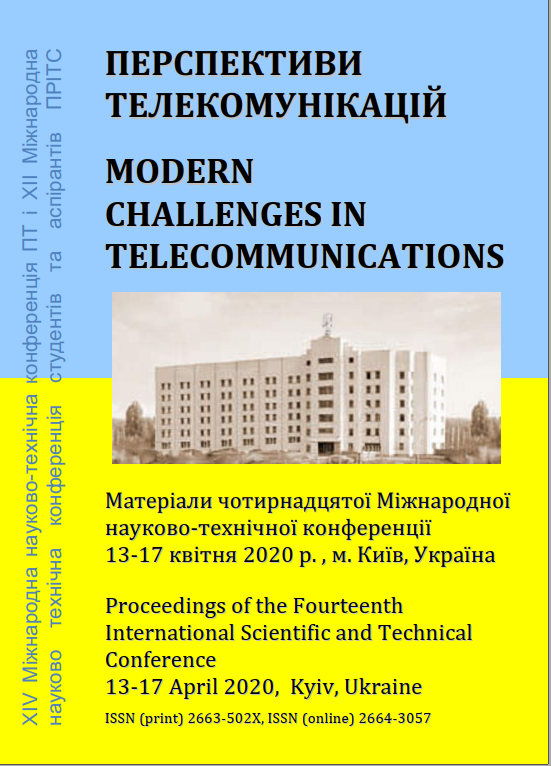SCOPES TO SOLVE THE TASK OF TELECOMMUNICATION RESOURCES DISTRIBUTION TO PROVIDE THE REQUIRED QOS
Ключові слова:
queuing system, QoS characteristics, priopitiesАнотація
The article observes the task of telecommunication resources distribution in unified queuing system (QS) that includes an arbitrary number of service devices, queue and also variety of priorities.
Можливості вирішення задачі розподілу
телекомунікаційних ресурсів для забезпечення потрібного QoS
У статті розглядається задача розподілу телекомунікаційних ресурсів в межах уніфікованої системи масового обслуговування (СМО), що включає довільне число обслуговуючих приладів, місця для черги, а також різноманіття пріоритетів.
Посилання
Урывский Л.А. Обобщение процесса «размножение и гибели» на системы с «конфликтом доступа» // Наукові записки Українського науково-дослідного інституту зв’язку: науково-виробничий збірник. – 2009. – № 1. – с. 97-104.
Уривський, Л. УЗАГАЛЬНЕННЯ СИСТЕМИ МАСОВОГО ОБСЛУГОВУВАННЯ З ПРІОРИТЕТАМИ [Електронний ресурс] / Леонід Уривський, Ганна Гахова // Збірник матеріалів Міжнародної науково-технічної конференції «ПЕРСПЕКТИВИ ТЕЛЕКОМУНІКАЦІЙ». – 2015. – с. 77…79. – Режим доступу : URL : http://conferenc.its.kpi.ua/proc/article/view/103070.
Уривський Л.О. Мартинова К.Г. Аналіз дисциплін обслуговування в мультисервісних телекомунікаційних системах// Тези доповіді/ ХІІІ Міжнародна НТК «Перспективи телекомунікацій 2019», /Збірник матеріалів. ― К.: ІТС НТУУ «КПІ», 2019, с. 356.
##submission.downloads##
Як цитувати
Номер
Розділ
Ліцензія
Авторське право (c) 2020 Kateryna Martynova

Ця робота ліцензується відповідно до Creative Commons Attribution 4.0 International License.
Authors who submit to this conference agree to the following terms:a) Authors retain copyright over their work, while allowing the conference to place this unpublished work under a Creative Commons Attribution License, which allows others to freely access, use, and share the work, with an acknowledgement of the work's authorship and its initial presentation at this conference.
b) Authors are able to waive the terms of the CC license and enter into separate, additional contractual arrangements for the non-exclusive distribution and subsequent publication of this work (e.g., publish a revised version in a journal, post it to an institutional repository or publish it in a book), with an acknowledgement of its initial presentation at this conference.
c) In addition, authors are encouraged to post and share their work online (e.g., in institutional repositories or on their website) at any point before and after the conference.

